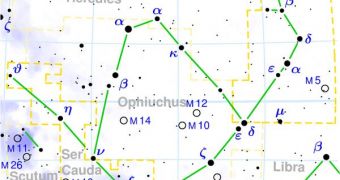Assuming we find a way of mitigating the damage we are currently doing on our planet, our children living 1.5 million years in the future could be in a heap of trouble. According to astronomers, there is an 86 percent chance of a nearby orange dwarf star colliding with our solar system eons from now, possibly impacting the Sun, or even our planet. Needless to say, another star entering the carefully-balanced solar system would known planets, dwarf planets and asteroid belts off-course, with devastating consequences throughout, Technology Review reports.
Space experts have known for a long time that our system's neighborhood is filled with stars, but thus far the necessary technology to determine whether they were coming or going has been lacking. As soon as it became available, astronomers began using it on our closest neighbors, and were able to determine that the orange dwarf Gliese 710 is heading our way, and that it is very likely to cross paths with the solar system. Initial measurements of the threat level we were under came from the European Space Agency's (ESA) Hipparcos spacecraft, back in 1997. At the time, the map of stellar velocity that the probe produced was amazing.
But recently new data and measurements have been added to the model. It has become obvious that there are about 156 stars with which the Sun either had encounters in the past, or will have in the future. The researchers also concluded that our yellow dwarf passes very close to other stars about one every 2 million years or so. In the new simulations, which feature additional datasets, 9 more stars were found, a number of which have still to meet up with the Sun. Unfortunately, Gliese 710 is one of them. The discovery was made by Russian experts at the Pulkovo Astronomical Observatory, who were led by scientist Vadim Bobylev.
The group was able to determine that the star will pass through the Oort Cloud, the massive circle of frozen space debris that surrounds the solar system, and which is believed to be the main source of comets. While many could say that the Oort Cloud is very far away from the inner solar system, the researchers argue that the event could unleash a rain comets unlike the inner planets have seen since the Last Great Bombardment, which riddled every single moon and planet with enough crater to last them throughout their existence.

 14 DAY TRIAL //
14 DAY TRIAL //